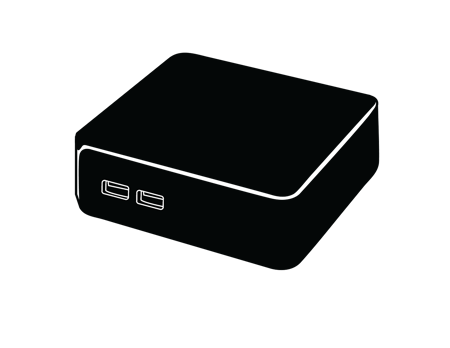Contents:
ChromeOS delivers a seamless, integrated solution for organizations looking to use kiosks for point-of-sale systems, testing purposes, and more. Using your ChromeOS devices as kiosks enables you to take advantage of Google’s broad range of services, including optimized app solutions and remote management, to modernize your business.
If you’re looking to use your Chrome device as a kiosk, here’s what you need to know about deploying and using this innovative technology.
Streamline Every Step of Your Google Journey with Promevo
What is a Chrome Kiosk
A Chrome kiosk is any computer kiosk hosted on a Chrome device, such as digital signage in airports, a restaurant menu, or an interactive game. Chrome kiosks are also commonly used as business center computers where users walk up and browse the web. After using the kiosk and ending their session, all their data is wiped for a secure user experience.
What can Chrome kiosks be used for?
Common business use cases for Chrome kiosks are point-of-sale systems, cataloging, and as devices for check-ins, ticketing, and ordering.
Common education use cases for Chrome kiosks are testing devices, library catalogs, photo booths, and visitor sign-ins.
What is kiosk mode?
Kiosk mode is when a device is running an application full-screen. Users can’t exit or navigate to other browsers or windows when kiosk mode is on.
What do I need to set up a Chrome kiosk?
Hardware
For hardware, you need a Chrome device and a display.

Chromebox: A Chromebox runs the same OS a Chromebook does, and you can upgrade its RAM. One advantage Chromeboxes have over Chromebits is that most have higher RAM and storage than Chromebits. Common brands include Asus, HP, Dell, AOPEN, Acer, and Lenovo.

Chromebase: Chromebases are desktops with fast booting speeds and 1080p displays. Some are touchscreen, which enhances kiosk interaction. Chromebases can come with or without touch support and have 1080p output over HDMI and DisplayPort interfaces. i3 and i7 Chromebases support full 4k resolution. Common brands include LG, Acer, and AOPEN.
Software
For software, you'll need a Chrome license and a Chrome kiosk app:
- Chrome license (one per Chromebox) - You can purchase Chrome licenses on Promevo’s online store or contact us by email at salessupport@promevo.com, by phone at (888) 380-1061, or submit this form to get in touch with a sales rep.
- Chrome kiosk app - You can use a Chrome kiosk app you create or a kiosk application from the Chrome Web Store.
Common Chrome Kiosk Questions
What is a Chrome app?
Chrome apps are similar to desktop software programs you install on your computer. The main difference is that you use apps directly within Chrome.
Chrome apps have access to Chrome Application Programmer Interfaces (APIs) and services that aren’t available to traditional websites. They look and behave like native apps and have native-like capabilities, but these capabilities are much more powerful than those available to web apps. You can build and deploy powerful apps — like music and video streaming and editing applications — that interact with network and hardware devices and media tools.
While Chrome apps deliver an experience as robust as a native app, they are as safe as a web page.
What are Chrome kiosk apps?
A Chrome Kiosk App is an application designed for Single App Kiosk mode on your Chrome device. They have a single-purpose use, such as guest registration desks or library catalog stations, and are useful for environments requiring users to interact with a single application.
Chrome kiosk apps are packaged Chrome apps designed to always run in full-screen mode using single-app kiosk mode on ChromeOS. They don’t allow users to exit the app. Any Chrome app can be a Chrome kiosk app if you run it as a kiosk app and set kiosk_enabled true in your app’s manifest file. However, applications designed to be full-screen apps work best.
A Chrome kiosk app can be launched manually or set to automatically launch when the Chrome device boots up. Once a Chrome kiosk app starts, the application’s abilities and settings define the user experience.
What is the difference between a public session kiosk and a single app kiosk?
With public sessions, multiple users can share the same Chrome device without signing in. For example, you could add public sessions to a Chrome device and use it as a help kiosk, loaner device, shared computer, or any other purpose where users don’t need to sign in. With public sessions, users can have a full browsing experience with multiple non-full-screen websites. Public-session kiosks are popular in libraries, business centers, and business lobbies because users don’t need credentials. Plus, the app deletes all session data when users exit their session. Learn more about public sessions here.
Alternatively, Single App Kiosk mode focuses on a single application and is a full-screen experience. They’re great for a purpose-built Chrome device, such as a guest registration desk, a library catalog station, or a point-of-sale system in a store.
Can you configure a Chrome device as both a public session kiosk and a single app kiosk?
Yes, but you can only automatically log in to one type of session or app at a time. For example, if you select Auto-Launch Public Session, you can’t set Auto-Launch Kiosk App on the same device.
Note: For large files, such as video billboards, you can configure a Chrome device to use external storage using the chrome.fileSystem API. For example, if you have a digital sign that features video content that’s 300 GB, and your Chrome device only has 16 GB of storage, you can use an SD card or USB to store the content for offline use.
What are the differences between Chrome App Builder and Chrome Sign Builder?
You can use Chrome App Builder and Chrome Sign Builder to make your kiosk app. Use the App Builder when content resides at one URL, and the URL doesn’t change, and use Sign Builder when content resides at multiple URLs.
Chrome App Builder creates a simple HTML5 kiosk app with a customized user experience. You’d use Chrome App Builder to create a Chrome kiosk app when the content URL isn’t going to change. Examples are an online catalog, point-of-sale software, or printing a boarding pass in an airport. The URL for these kiosks wouldn’t change (even though the URL content might). The Chrome App Builder lets you set session idle timeout and restart session controls. This will clear out user data between sessions. This is important for digital kiosks where users interact with the app, such as a ticket printing kiosk.
Chrome Sign Builder creates a schedule to display a digital sign. In most cases, the content displayed in digital signs requires more than one URL. For example, a restaurant kiosk would have separate URLs for the breakfast, lunch, and dinner menus.
Harness the Full Capabilities of ChromeOS Technology with Promevo
Why Promevo?
Whether you’re just getting started using ChromeOS devices for your organization or looking to get more out of your Google technology, Promevo can help. Our Google-certified specialists provide end-to-end support as you navigate your Google journey. From Google Workspace management to purchasing ChromeOS devices, let us serve as your support team so you can get the most out of Google’s technology.
Shop Chrome devices on our online store, or get in touch with our sales advisors if you have more questions. All Promevo customers get free support from our Google-certified experts, so don’t wait! Contact us today to get started.
Additional Frequently Asked Questions
How do I use Chrome kiosk?
To set up Chrome kiosk, you need a Chrome device and display setup, such as a Chromebook. You also need a Chrome license and Chrome kiosk app to get started.
How do I run a Chromebook kiosk?
To run kiosk mode on your Chromebook, follow Promevo’s guide here. Remember that you’ll need hardware to set up and display your kiosk, and you’ll need a Chrome license and Chrome kiosk app.
What is Chrome Kiosk vs Fullscreen?
Chrome kiosk mode turns your screen into a single-use window and doesn’t allow any user access to other screens besides the application it’s set to. Full-Screen mode is when any window uses your entire screen but still acts as a window. Users can close out the window and move to other pages and applications.
